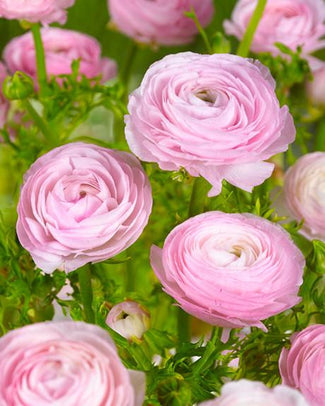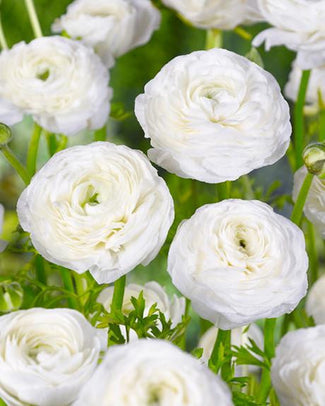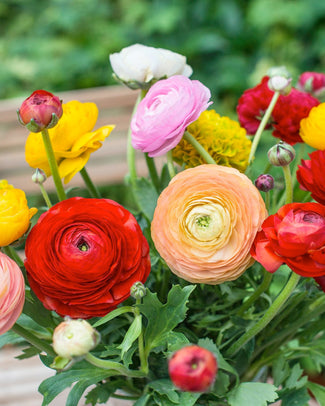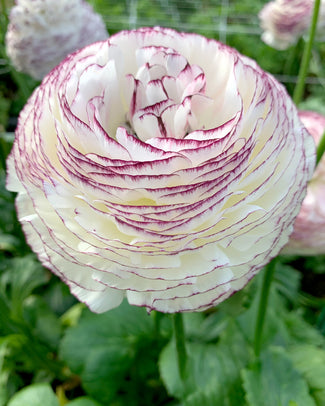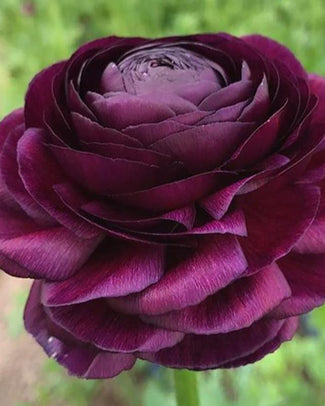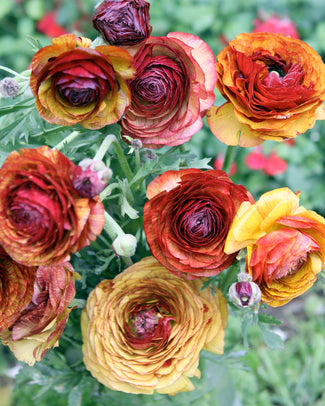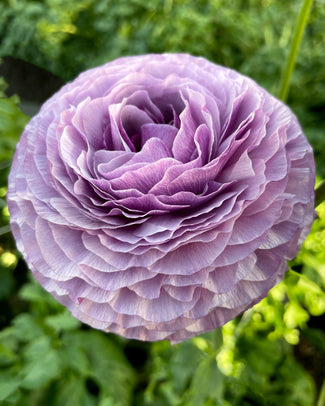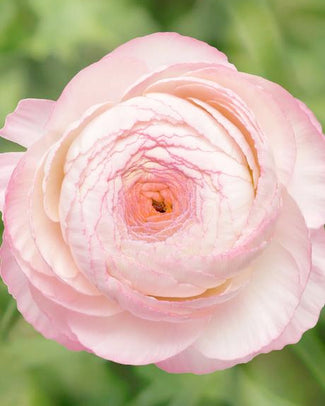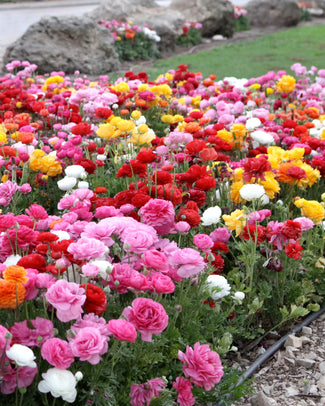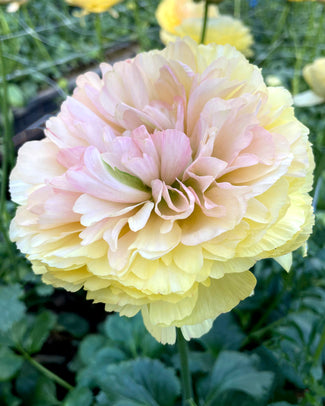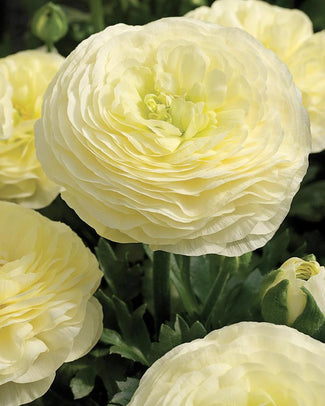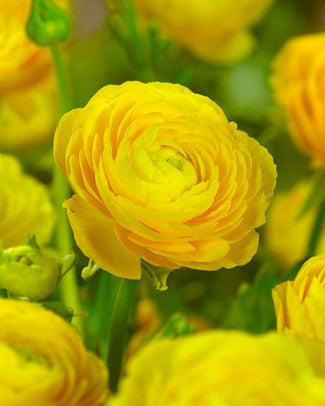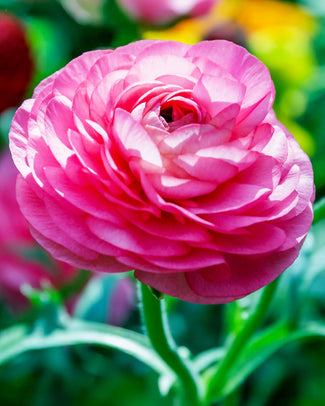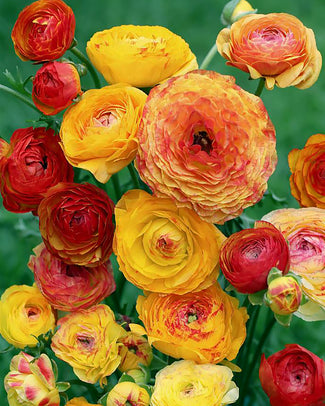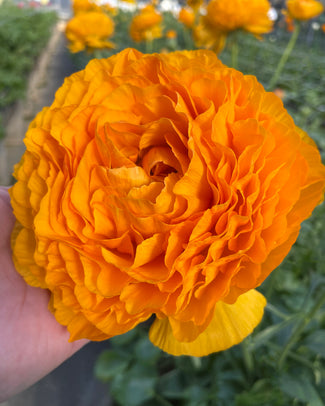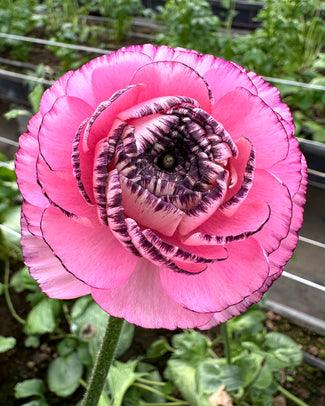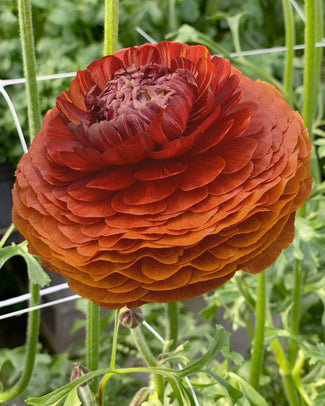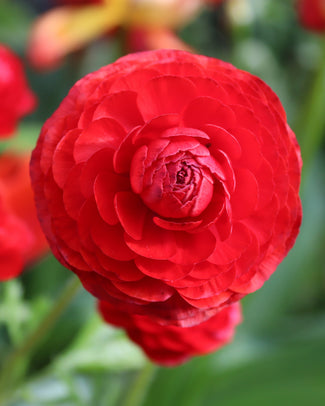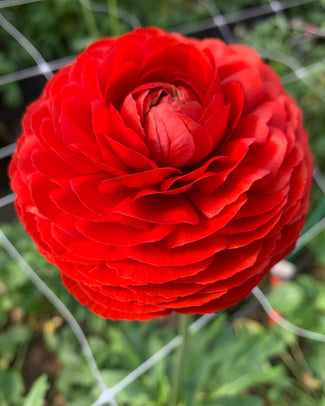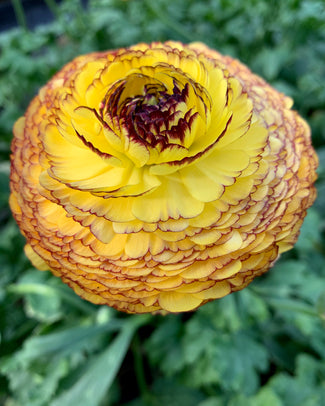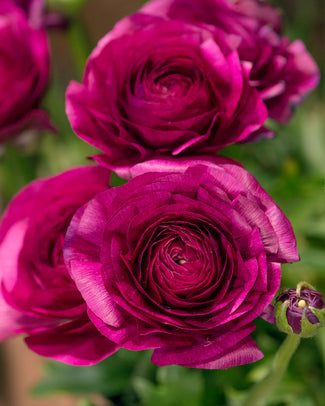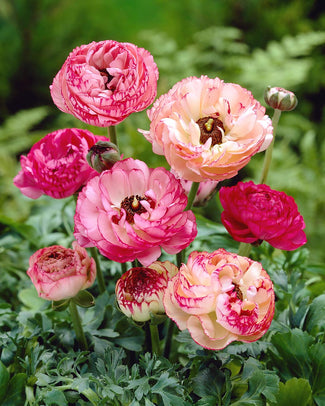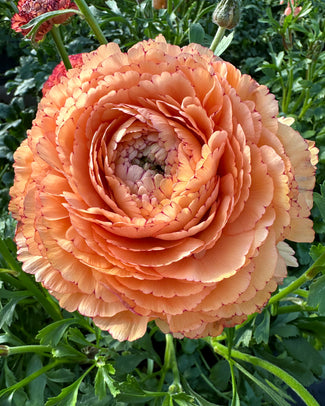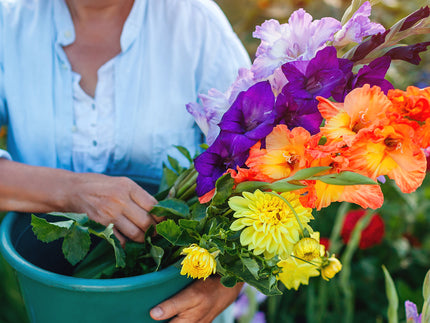How to grow Ranunculus
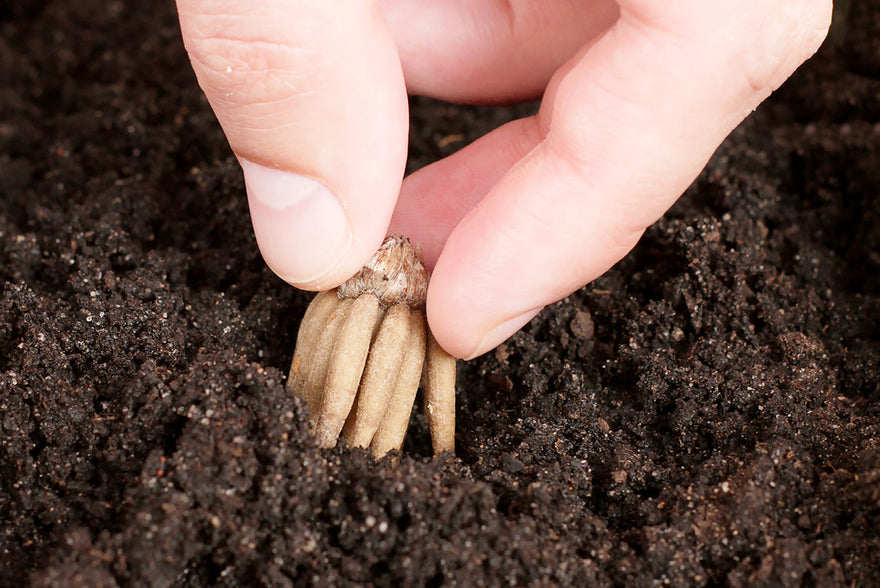
When you see these spectacular blooms, you’ll find it hard to believe they’re actually buttercups! Flaunting remarkably luxurious and intricate petal-packed flowers during spring and early summer, these are a world apart from their little yellow wildflower relatives. But their humble origin is partly what adds to their charm, making them easy to grow and resilient as well as incredibly beautiful. Ranunuculus have long been adored by gardeners and florists alike for their brilliant qualities – bred to perfection to produce the most stunning blooms, you’ll just love them in the garden as well as the vase!
A few planting basics
Ranunculus are grown from corms which look like claws. Thriving in a sunny spot with cool, moist soil, the lovely big blooms these plants produce will appreciate a sheltered spot away from strong winds to keep them in top condition. Ranunculus are half hardy, for best results it is recommended to plant them into a sheltered part of the garden where conditions will not freeze for prolonged periods and temperatures are unlikely to fall below around -3C. They can usually tolerate a light frost for a short period. Or, start them in temporary pots in an unheated greenhouse and transplant them into suitable growing positions when risk of freezing conditions has passed.
Ranunculus grow best in borders, they can also grow in gravel gardens and meadow areas. While they enjoy sunny conditions, they prefer their roots to be in cool, damp soil. If planting in containers, bear in mind that soil in patio containers can become very warm in direct sunlight in spring and summer, therefore the pot should be shaded behind other containers to prevent the soil from becoming too warm in the sun.
Ranunculus are supplied for planting in autumn and spring. For each season, fresh bulbs are harvested and it is important to plant the bulbs in the same season as supplied - they will not stay fresh and viable if stored for several months until the next planting season. Ranunculus planted in spring will flower in summer/autumn. Those planted in autumn will flower in spring. The corms will be dry and may appear shrivelled on arrival, often they have a tufted area at the top. After a soak in water for 3-12 hours, the corms will plump up. Soaking the corms prior to planting rehydrates and helps to activate them into growth.
How to plant Ranunculus
- Ranunculus are half hardy, they can usually tolerate light overnight frosts but not prolonged periods in freezing conditions. They can be potted up into individual 9cm pots and grown on in a cool greenhouse until freezing temperatures outdoors have passed. Or, they can be planted directly into the garden if risk of freezing temperatures has passed. They should not be grown in warm indoor conditions.
- If your Ranunculus are sent to you in late summer/autumn, they should be planted in autumn/early winter. If your Ranunculus are sent to you in late winter/spring, they should be planted in spring or early summer.
- Soak the ‘claws’ in plain water for 3-12 hours prior to planting.
- Plant them directly into a sunny, sheltered border or patio container or pot them up individually into 9cm pots to grow on first.
- Plant the ‘claws’ facing downwards, approximately 2-3cm deep, and water-in.
- After planting, keep the soil around your Ranunculus plants hydrated but not soggy, and maintain regular watering throughout the growing season whenever the soil is dry.
- Shoots and leaves usually start to appear after around 4-8 weeks.
- If starting in individual pots, it is best to wait until the plant can easily come out of the pot with the soil held intact by the roots before transplanting it into the garden. Ranunculus do not cope with root disturbance, which can easily happen when the soil falls from the roots during transplanting.
Plant calendar
| Jan | Feb | Mar | Apr | May | June | July | Aug | Sep | Oct | Nov | Dec |
|---|---|---|---|---|---|---|---|---|---|---|---|
- Planting
- Flowering
































































































































































































